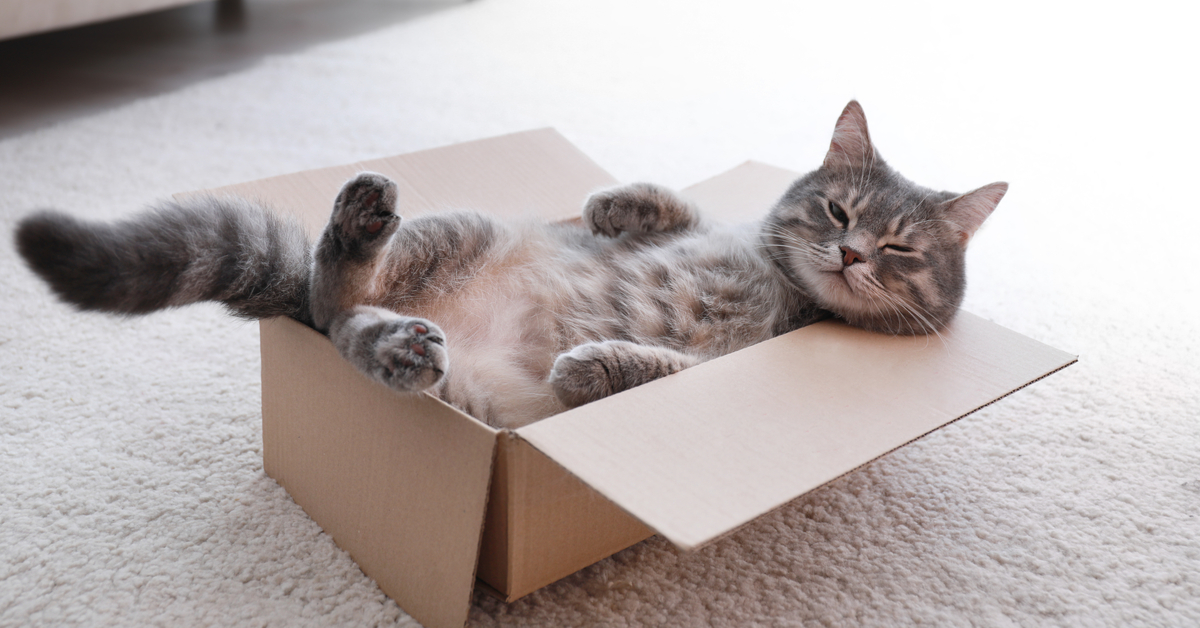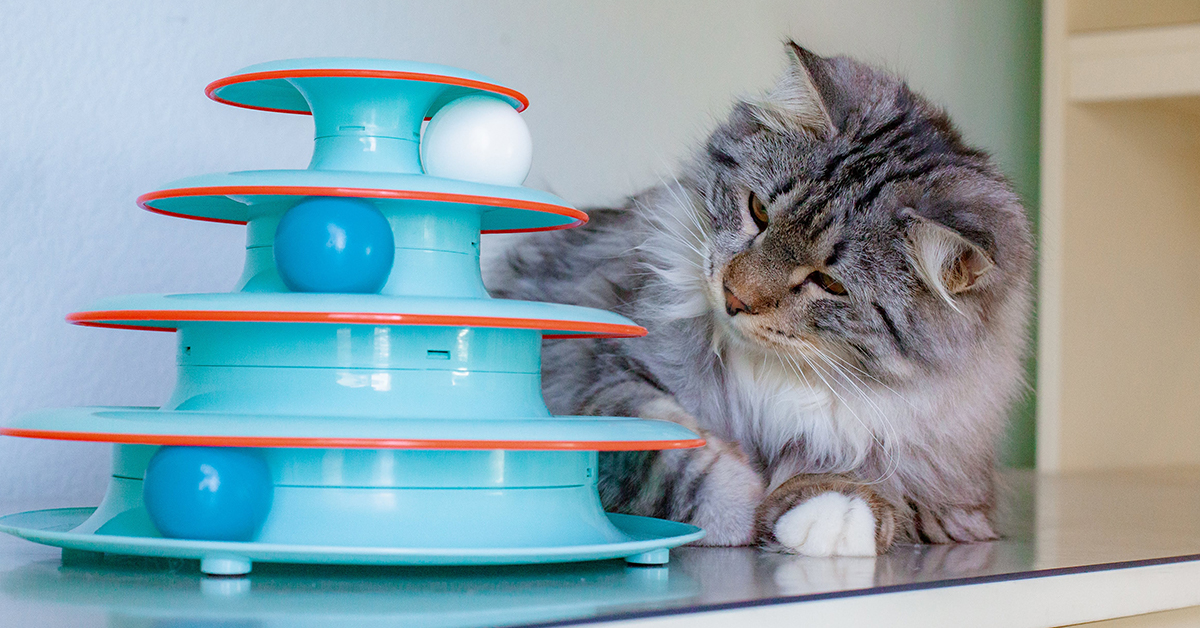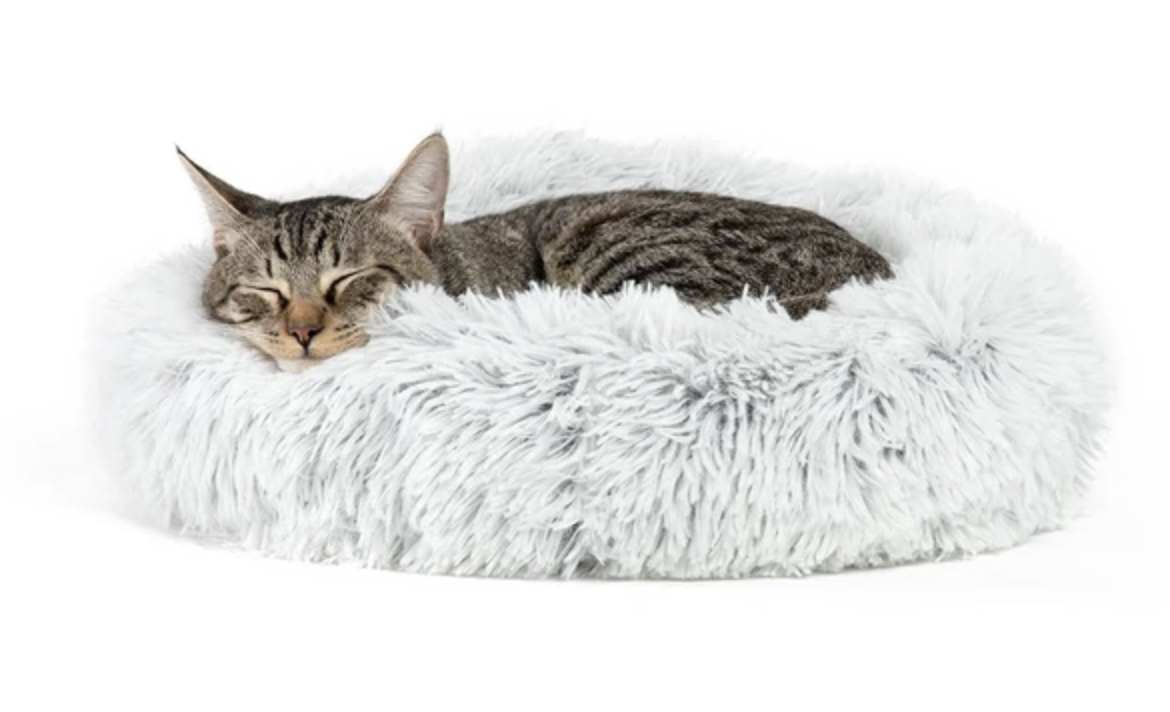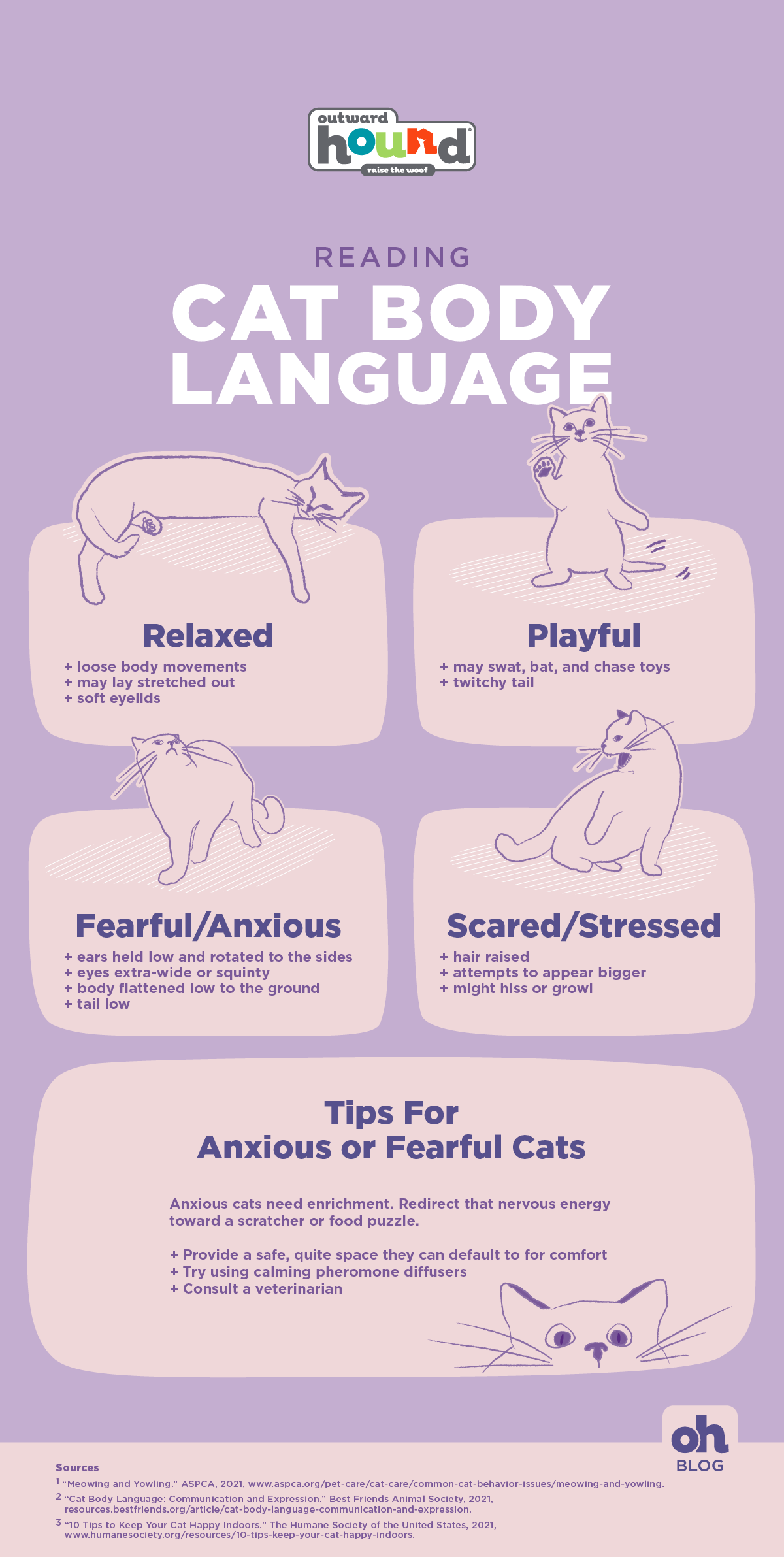Cats can be tough to figure out. They aren’t always so upfront with their emotions like dogs and you may not be able to tell whether they are happy, sad, or experiencing a wide range of other feelings. Know how to read cat body language can help demystify some of these emotions.
As a cat owner, you wonder: What does it mean when your cat’s tail is moving? How about when she meows or purrs? And what exactly does that slow blink entail?
Cat Body Language

By discovering what your cat’s body language is telling you, you will be able to communicate better with your kitty and ensure she is comfortable and content at all times.
We will go over some of your cat’s behavior, typical cat emotions, facial expressions, and the body language that accompanies them.
Fearful or Anxious

You’ll know your cat’s mood is fearful or anxious if her ears are held low and rotated to the sides or if they are tucked back on her head. Additionally, your cat’s tail may be low, and your cat’s eyes could be wide or squinty. Your cat’s pupils could be big too.
She might flatten herself to the ground or hold her legs underneath herself in a crouched position. If she is scared or stressed, then she could raise the hair on her tail and back to make herself appear to be bigger.
This gesture of “puffing up” could also mean that you are dealing with an angry cat or an aggressive cat. Since cat bites and scratches can seriously hurt you, it’s best not to approach your cat when she is in this position.
In terms of vocalizations and other warning signs of fear or anxiety, your cat could hiss, growl, or spit. If you go near your cat, just be aware that she may bite or attack you.
Cat Body Language: Relaxed

Hopefully, your cat will be relaxed most of the time. Your calm cat will have slow and steady breathing and loose body movements, as opposed to stiff ones. She may stretch out as well.
Your cat’s ears and whiskers should be in their normal position or slightly forward. Your cat’s pupils will appear as thin slits, and her eyelids will be soft. She will likely be doing the slow blink.
Playful Cat Body Language

If your cat wants to play with you, then her pupils may be dilated. Your cat’s eyes could get really wide as well.
Your cat’s tail will flick from side to side or seem twitchy (however, this could also mean that she is annoyed). When your cat is feeling playful, she may swat, bite, pounce, chase, or stalk.
Keep in mind that your cat’s playful body postures could look similar to her survival behavior. The way to tell the difference between playful and survival feline behavior is the movements. If her movements are bouncier and softer, then she is playing.
When being playful, she might chirp to get your attention. She also will not mind rolling on her back, which she would never do in the wild.
When your feline friend seems like she is playful, break out the cat toys to get her going! And don’t forget the catnip.
Loving Behavior
If your cat is feeling affectionate or loving, she may start kneading on you and rubbing up against you. Your cat’s tail will be held high, and you may see a tiny curve at the end of it.
Detecting Illness in Your Cat
Sometimes, your cat’s body language won’t necessarily show her emotions but rather her physical pain and discomfort because she is not feeling well.
Your cat may hold her eyes shut or squint them and her whiskers could be pointed downward. Your cat’s ears could be rotated outward or they might be sitting low. She may roll to her side and drool.
There may also be discharge coming from your cat’s eyes or nose. As soon as you recognize that your cat is acting differently, get in touch with your veterinarian right away. The faster you take her to the vet, the better.
What Your Cat’s Vocalizations Mean

Now that you’ve decoded your cat’s body language, you may be wondering what other vocalizations, such as meowing and purring, mean. Cats’ main vocalization is meowing and chirping. A meow or chirp means that your cat wants your attention. She may be asking you to pet her, feed her, give her a belly rub, play with her, or pay attention to whatever it is that she is doing.
When it comes to purring, it could mean that your cat is happy, relaxed, or self-soothing. You may notice that when she kneads, she also purrs. If your cat is at the veterinarian and she doesn’t like being there, she may purr to calm herself down, for instance. If she is in pain, she might also purr because it could help numb her pain.
You may have noticed that your cat yowls, too. While meowing is how cats communicate to humans, yowling is how cats communicate with one another. Typically, a cat will yowl when they are breeding. A female cat will yowl to attract a male cat, and a male cat will yowl to gain access to a female cat.
Keeping Your Cat Happy

Since you’re a cat owner (or new cat owner!), you’re always looking into understanding cats better. Along with paying attention to your cat’s body language and responding accordingly, if you have an indoor cat, try giving it time outside by providing a safe enclosure in your backyard.
Cats need enrichment. If your cat is anxious, redirect that energy to a scratching post or food puzzle. You can buy your best feline friend a cat tree that she can play with and climb on to get some exercise as well.
It’s important for cat owners to play with their kitties every day and to get cat toys that let them chase, stalk, kick, and pounce. Switching up the cat toys every so often is recommended so that your kitty doesn’t get bored.
If you have an anxious or fearful cat, consider a calming cat bed. The raised rim of a fluffy donut cat bed creates a sense of security for them and provides prime burrowing opportunities for when they want to curl up.
You should also clean the litter box regularly and consider giving your feline friend cat grass so that she can graze. Of course, petting her, responding to her vocalizations, and letting her knead are going to make her very happy as well.


